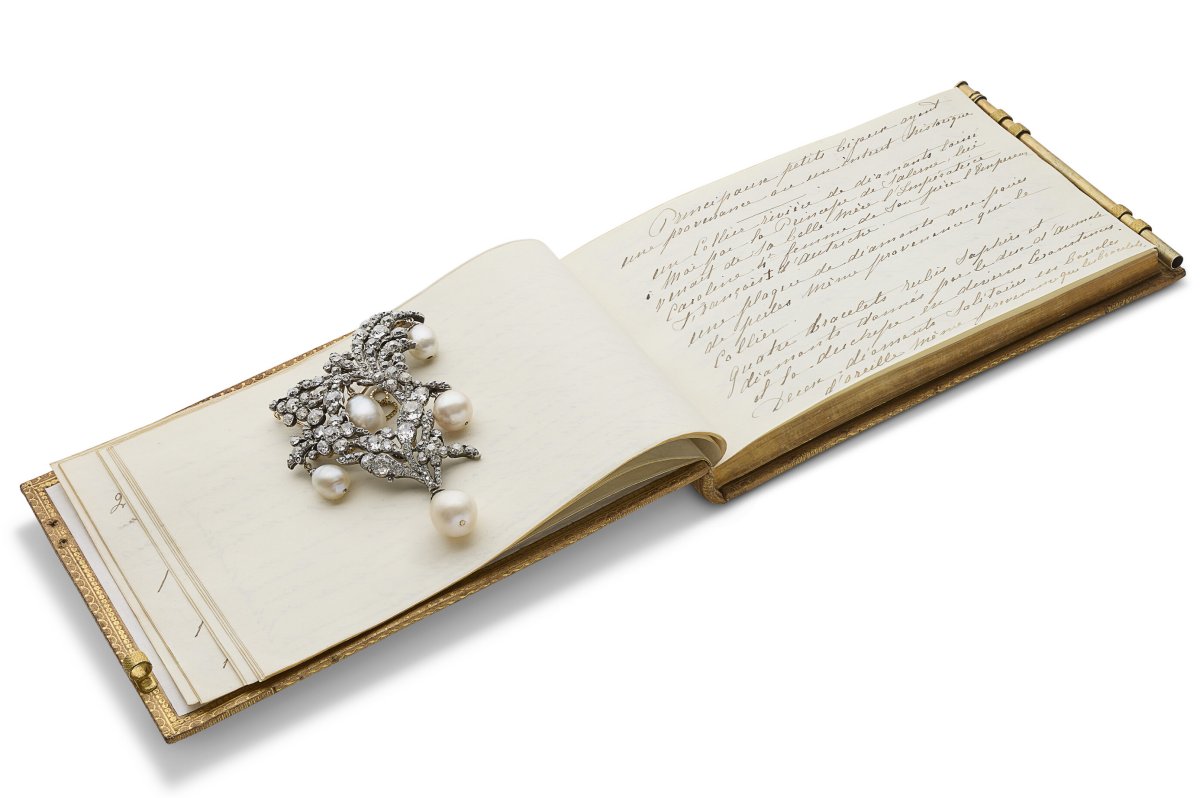
Tomorrow in Paris, the auction of a Habsburg jewelry treasure concludes at Christie’s, with bidders making their final play to own a piece of Austrian imperial history.
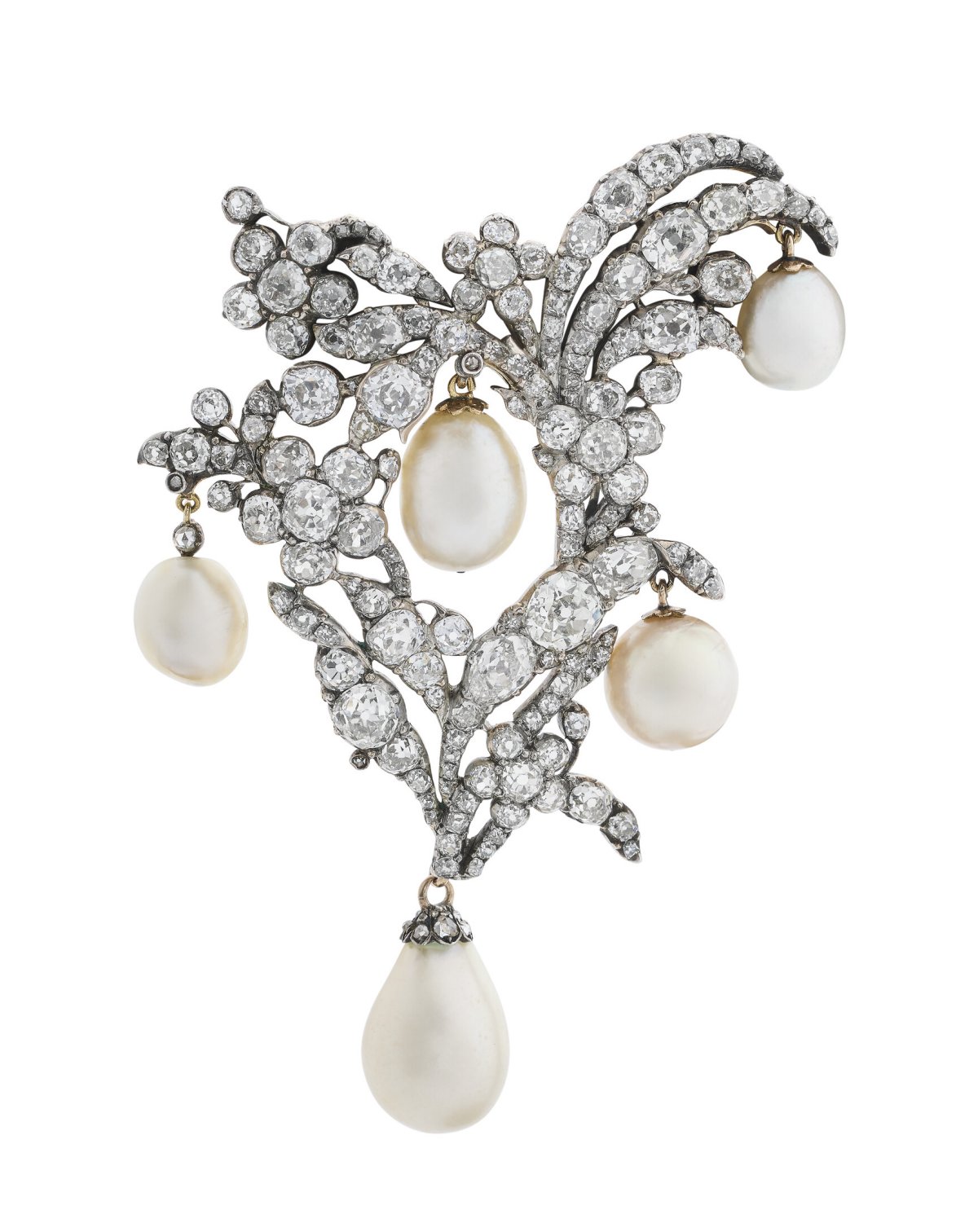
The jewel in question is a classic diamond brooch hung with five pearl pendants. The experts at Christie’s note that the brooch is set with “old and rose-cut diamonds” and “drop-shaped natural pearls” in white and yellow gold. The piece bears French marks. Christie’s believes that it was made in the 1820s or 1830s.
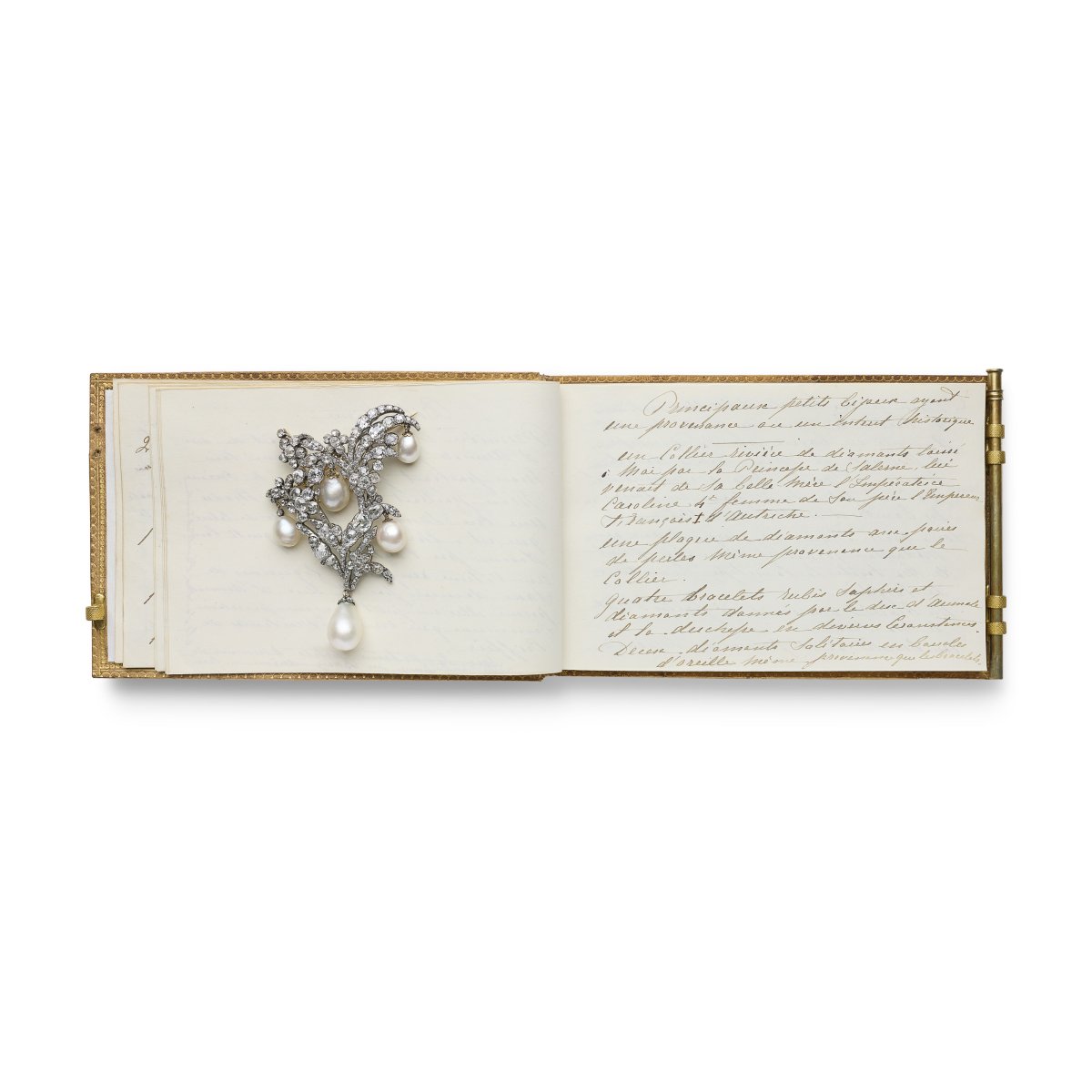
The brooch is part of a lot that also includes another item: a “period gold and mother-of-pearl book” that includes inventory and provenance notes about a jewelry collection that belonged to an unnamed royal woman. The book, photographed here with the brooch laying on one of the pages, features a note written in French: “Principaux petits bijoux ayant une provenance ou un intérêt historique. Un collier rivière de diamants laissé à moi par la Princesse de Salerne, lui venait de sa belle-mère l’Impératrice Caroline, 4ème femme de son père l’Empereur François Ier d’Autriche. Une plaque de diamants avec paires de perles même provenance que le collier.”
Christie’s provides a translation, but I have a small quibble with one of their choices, so here’s my own translation of the text: “Main little jewels with a historic provenance or interest. A diamond rivière necklace left to me by the Princess of Salerno, which came from her stepmother, Empress Caroline, the fourth wife of her father, Emperor Francis I of Austria. A diamond plaque with pairs of pearls, of the same provenance as the necklace.” (Christie’s translates belle-mère as “mother-in-law” rather than “stepmother,” which isn’t accurate in this case. Perhaps that’s why some of the provenance information they offer about the piece is a little confused, with the wrong archduchess linked to the Salerno title in one section.)
The experts at Christie’s state that the brooch included in today’s auction in Paris is the diamond and pearl “plaque” that is referenced in the jewelry inventory. I do find it curious that the pearls are described as being in “pairs,” as they don’t look particularly twinned on the brooch itself.
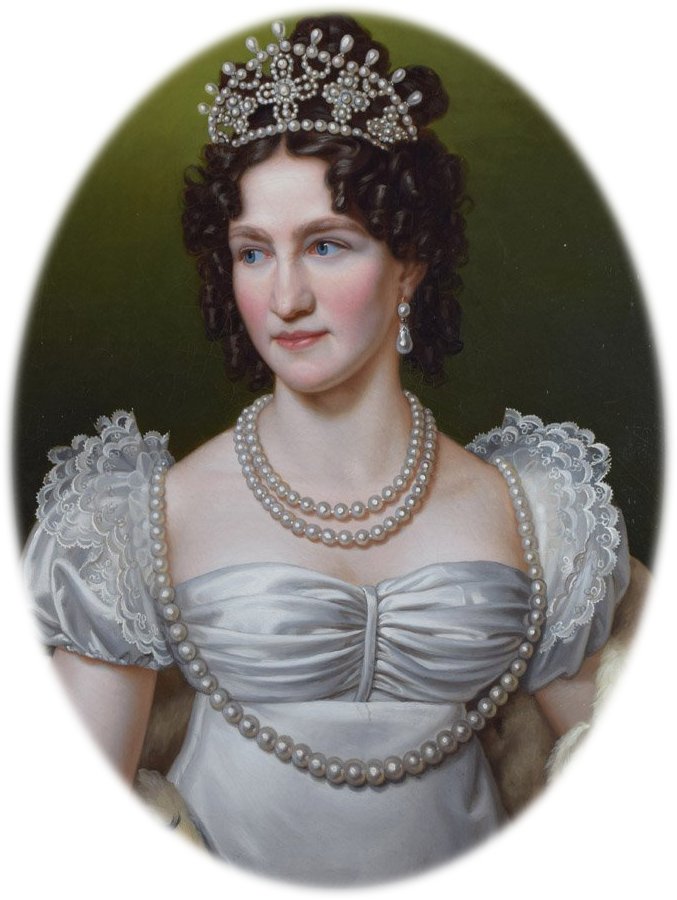
Even curiouser, Christie’s does not tell us who the “moi” in the note references. The owner of the inventory book is not identified in any of the lot notes published online for the brooch. We’re left to make some educated guesses, based on the family lines of the two women who are identified in the text: Empress Caroline Augusta, the fourth wife of Emperor Francis I of Austria, and her stepdaughter, Archduchess Maria Clementina, the Princess of Salerno.
Caroline Augusta, born in 1792, was the third daughter of King Maximilian I Joseph of Bavaria and his first wife, Princess Augusta of Hesse-Darmstadt. Caroline grew up in a large family of royal siblings, especially sisters who made glittering matches. Her elder sister, Princess Augusta, married Napoleon’s stepson, the Duke of Leuchtenberg. Her younger half-sisters included a Queen of Prussia and two Queens of Saxony.
In 1806, an equally important match was arranged for Caroline. She married the Crown Prince of Württemberg and seemed destined to sit beside him on that German throne. But the marriage, which had been a political arrangement, was a failure. The couple separated and divorced on grounds that the marriage had never even been consummated, and the Pope granted them an annulment in 1816.
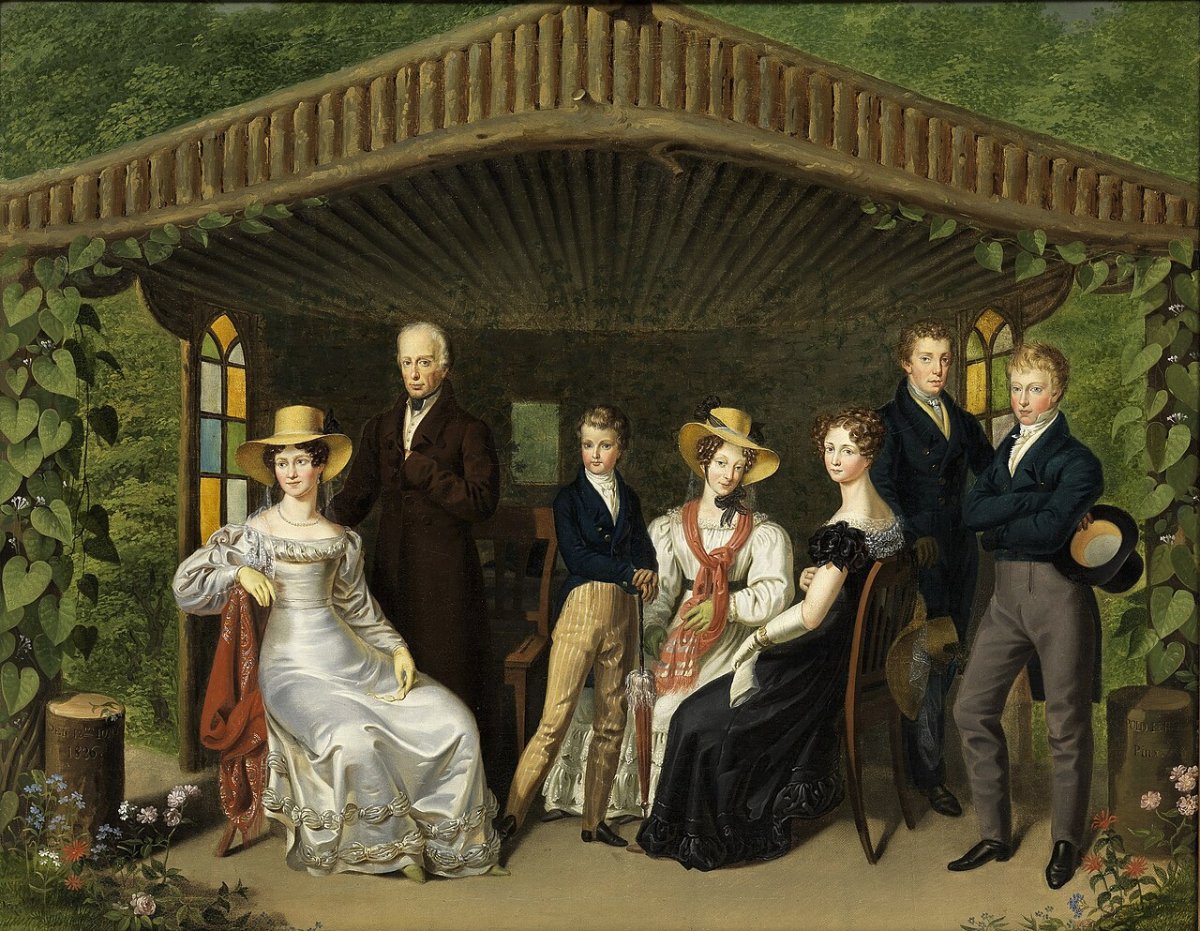
The annulment freed both parties to marry again. Caroline was pursued by two eligible sovereigns who happened to be brothers: Emperor Francis I of Austria and Grand Duke Ferdinand III of Tuscany. Caroline ended up accepting the Austrian proposal, becoming Emperor Francis’s fourth wife in 1816. The two did not have children—not a problem, as Francis already had seven living children from his previous marriages—but they were much more compatible than she and her first husband had been.
Empress Caroline’s tenure in the world of the Habsburg court was eased by the fact that other members of her family also married Austrian archdukes. Her younger half-sister, Princess Sophie of Bavaria, married Emperor Francis’s younger son, Archduke Franz Karl, in 1824. The family portrait above features Empress Caroline and Emperor Francis on the left, with Princess Sophie, seated, in black and her husband, Archduke Franz Karl, standing just to the right. Also featured here are Francis’s eldest son, Crown Prince Ferdinand, standing at the far right. Francis’s eldest surviving daughter, the Duchess of Parma—who was Empress of France as the second wife of Napoleon Bonaparte—is sitting in a white gown in the center. Her son, Franz, Duke of Reichstadt (Napoleon II) standing beside her.
Eventually Franz Karl and Sophie’s son, Archduke Franz Joseph, married yet another Bavarian princess from Empress Caroline’s family: her niece, Duchess Elisabeth, who was nicknamed Sisi. The pair would eventually sit on the Austro-Hungarian throne as Emperor Franz Joseph I and Empress Elisabeth.
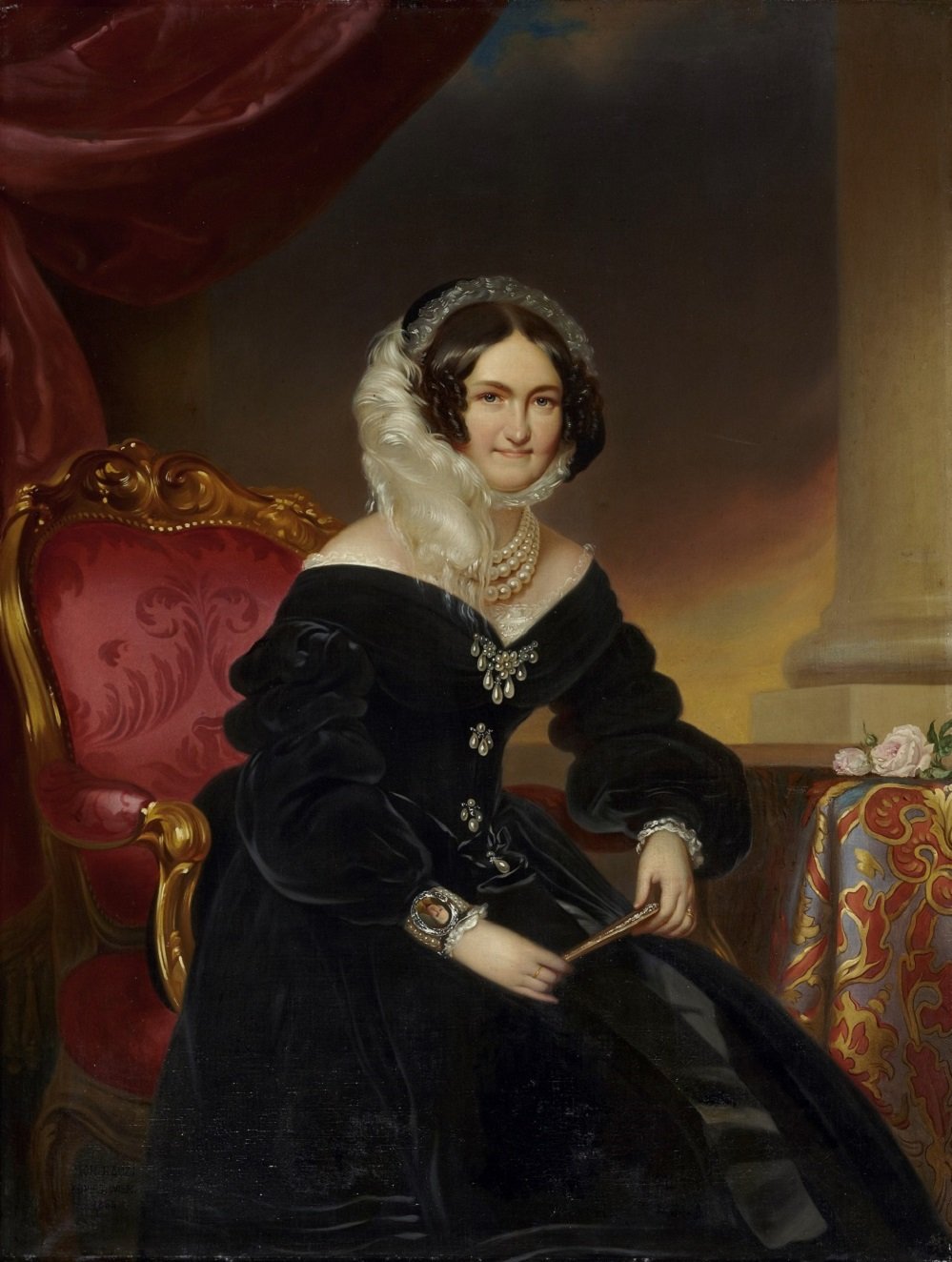
Caroline also developed close relationships with several of her stepchildren and stepgrandchildren. Like her sister, Sophie, Caroline was fond of the Duke of Reichstadt, the son of Napoleon Bonaparte and the Duchess of Parma. Her other stepdaughters included Archduchess Maria Leopoldina, the first wife of Emperor Pedro I of Brazil; Archduchess Maria Clementina, wife of the Prince of Solerno; Archduchess Maria Carolina, who married the Crown Prince of Saxony; and Archduchess Maria Anna.
Widowed in 1835, the Dowager Empress Caroline spent much of the rest of her remaining four decades in Salzburg. In the portrait above, painted almost 30 years after her husband’s death, she still wears black, as well as a bracelet featuring a miniature portrait of the late Emperor Francis. She’s absolutely bedecked in pearls here, including a brooch that was sold at Sotheby’s in 2012, so it’s no surprise that the diamond and pearl brooch currently for sale at Christie’s in Paris may have come from her collection, too.
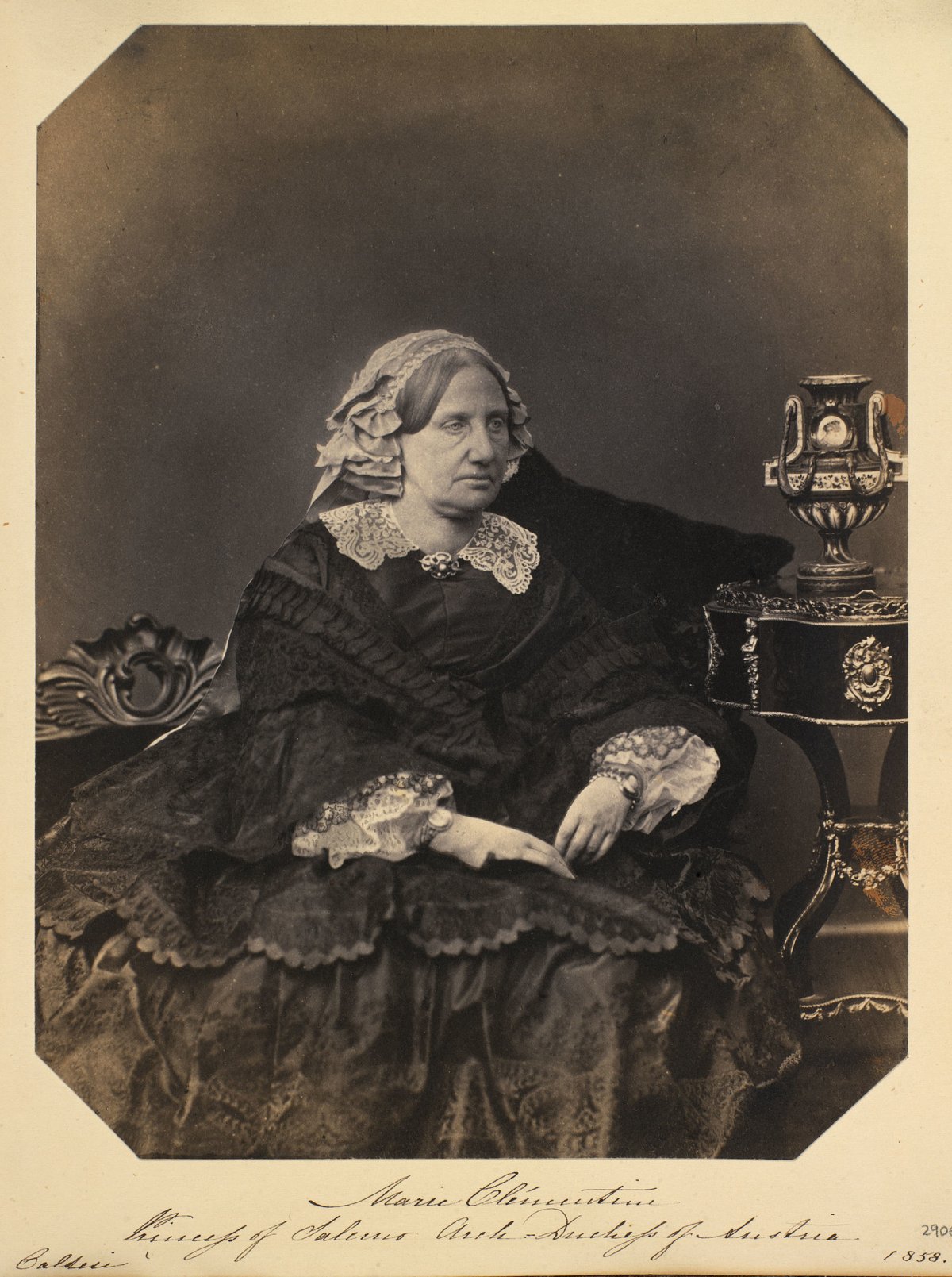
Empress Caroline passed away in Vienna in 1873. If the inscription in the inventory book is correct, some of her diamond and pearl jewelry was bequeathed to her stepdaughter, the Princess of Solerno: Archduchess Maria Clementina, the fifth daughter of Emperor Francis I and his second wife (and double first cousin), Princess Maria Teresa of Naples and Sicily.
In 1816, just a few months before Caroline Augusta married Emperor Francis, Maria Clementina celebrated a wedding of her own. She married Prince Leopoldo, the sixth son of the King of Naples and Sicily. Leopoldo and Maria Clementina’s union demonstrates just how intermarried the Catholic royal houses of Austria and Italy had become. Maria Clementina was the daughter of a pair of double first cousins who had married, meaning that she only had four great-grandparents instead of eight and eight great-great-grandparents instead of sixteen. And then she married Leopoldo, who was her uncle—the younger brother of her mother, Maria Teresa.
Perhaps it’s not surprising, then, that although Leopoldo and Maria Clementina had four children together, only one of them, Princess Maria Carolina, survived to adulthood. Several of the Habsburgs and Bourbons had health difficulties, including physical and intellectual disabilities, because of their lack of genetic diversity. In the end, Maria Clementina quite tragically outlived her entire family: both of her parents, two stepmothers, all of her siblings, her husband, all of her children, and all of her grandchildren all died before her passing in 1881.
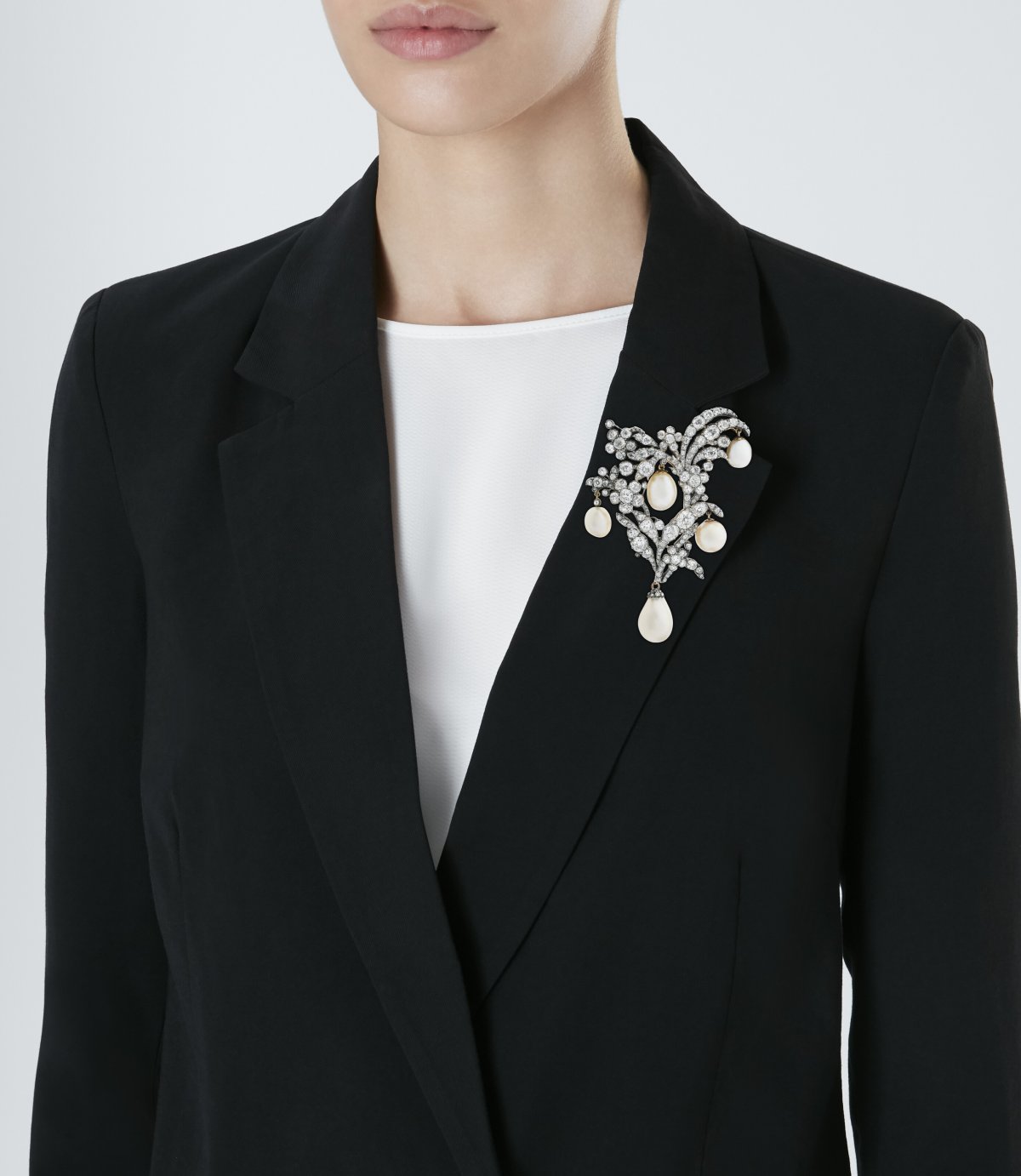
With no living heirs, Maria Clementina’s jewelry was left to other family members. Jewelry historian Vincent Meylan, who often collaborates with the experts at Christie’s, wrote recently, “She had no descendants therefore her jewels were left to relatives. This was the case of that brooch which is coming to the market for the first time.” Exactly which relative is not disclosed. Maria Clementina’s collection of nieces and nephews included the Emperor and Empress of Austria, the Emperor of Brazil, the King of Portugal, and numerous others. Christie’s does not offer us any additional clues to the identity of the person who inherited the brooch and wrote the notes in the inventory book.
We do, though, have a sense of what the auction house believes the brooch may bring when the online sale closes. The auction estimate for the brooch is set at between 60,000-80,000 euros, or around $70,000-$93,000 USD. We’ll see how much the brooch sells for when the hammer falls tomorrow!
Leave a Reply
You must be logged in to post a comment.